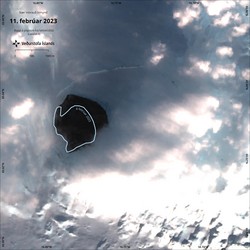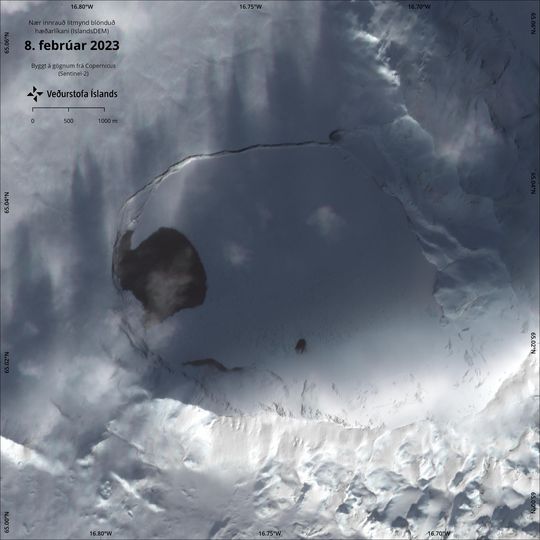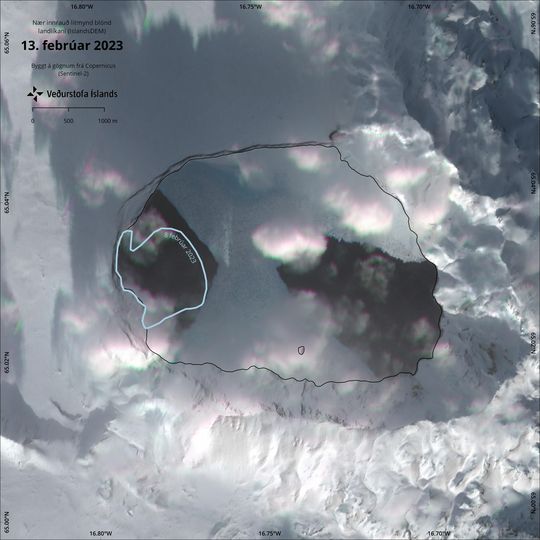The ice covering the lake in Askja is melting
The cause of the melting is unknown
Satellite images from the past week show that the ice covering Askja lake has been melting. Normally the ice melts in the summer between June and July, so this melting in February is quite unusual. A similar event was recorded in 2012 when the ice in Askja lake started to melt in March.
The reason why the ice covering the Askja lake has melted so much in the past days is unknown, and no measurements are currently available to fully understand the cause. A few explanations, however, are thought to be possible.
Askja lake is surrounded by, and contains within it, several active geothermal areas. The water in the lake is normally warm because of the geothermal activity within the lake, and the water itself contains enough energy to melt the overlaying ice. There does need to be some driving force to trigger the process, which could be: an increase in the geothermal activity, an unusual upwelling of gas from the bottom, a landslide into the lake, or winds might facilitate the breakup of the ice when interacting with pre-existing openings, such as are always present on Lake Askja.
One possible explanation is that the unusually early melting is due to an increase in geothermal activity, although unusual snow melting outside the lake is not seen. Similarly, during the unusual melting of March 2012, there were also no additional signs of an increase in geothermal activity. Very unusual meteorological conditions affected the area North of Vatnajökull in the recent weeks with very strong southerly winds and temperatures up to 5-9 °C measured at Upptyppinga (the meteorological station closest to Askja, located about 25 km from Askja but at 600 m lower altitude). Similar weather conditions were present during the premature ice melting in 2012. However, it is worth mentioning that other lakes in the highlands remain ice-covered, but these lakes do not contain active geothermal areas and do not maintain persistant openings in their ice.
Uplift continues at the same rate
Askja volcano continues to be in a state of volcanic unrest characterized by an ongoing uplift. The uplift continues at a very stable rate since the beginning of the unrest and it has now reached 50 cm at the station closer to the center of Askja caldera. The uplift is most likely caused by a magmatic intrusion modeled at 2-3 km depth. “The seismicity in the area did not show significant changes in the past weeks compared to the activity detected shortly after the beginning of the uplift”, says Benedikt G. Ófeigsson, specialist in ground deformation at the IMO, “There is indeed no evidence that the current premature ice melting is related to the ongoing unrest started in 2021, as it was not the case in 2012. However, we cannot exclude with certainty that this event is connected with the general reactivation of the volcano”, says Benedikt.
Scientists at Icelandic Meteorological Office continue to monitor Askja volcano and all further updates will be communicated through the usual channels.
A series of pictures showing the changes in the ice covering the lake in Askja between February 8-13, 2023. Based on data from Copernicus (Sentinel-2). Click on the images to view a larger version.







